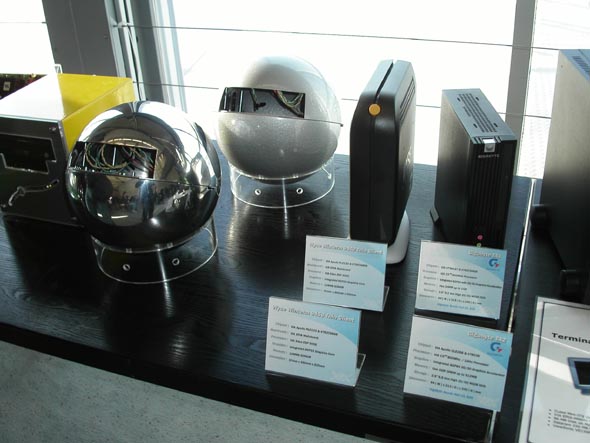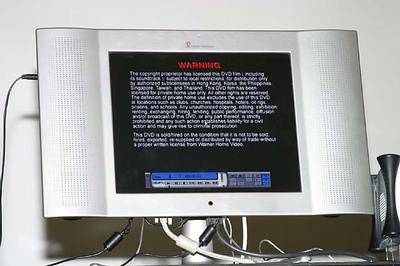VIA Technologies is one of the leaders in making chipsets and processors;
the Taiwanese giant is attacking more aggressively these days, and Intel
has to do its best to maintain its position not to mention development
of new markets.
VIA's press conference held in Hannover at CeBIT 2003 gathered the largest
audience, except ATI (the hall provided couldn't house all listeners).

In the news we mentioned that VIA started a new processor project named
Mark CoreFusion. At CeBIT VIA disclosed more information.

The main idea of Mark CoreFusion is integration of the north bridge into
VIA C3 processor. It must be something average of C3 (namely, Nehemiah)
and CLE266 in one package. The next step is integration of a south bridge,
like VT8235, into the hybrid processor. Some time ago the company had a
similar project named Matthew chip which was presented yet at CeBIT 2000.
But a bit later the project was frozen. Well, at that time they would hardly
get a more or less efficient solution. By the way, Intel had a similar
project named Timna which was called off as well.

Why is Matthew reanimated? It's simple: the current mini platform EPIA
is quite successful. The companies demonstrated working systems and platforms
at the conference.


Why not to strengthen the success? The Mark chip will actually be a hybrid
chip, which is called MCM (Multi Chip on Module) today. The processor core
and chipset will be produced separately, and they will be integrated on
a single plate according to the market demand for models with a certain
clock speed or customer's wants. As a result, the first-generation Mark
CoreFusion chip will be a hybrid of 1GHz C3 CPU with 1.25V on the core
and power consumption of 12 W, CLE266 north bridge with S3 CastleRock graphics
and MPEG-2 hardware decoding, analog and DVI outputs, SDRAM and DDR SDRAM
interfaces (DDR266). The variations with PM133/266 north bridges (Savage4
graphics) or PLE133 (Trident graphics) are also possible. VT8235 and VT8237
can be used as integrated version of south bridges.
The current sandwich has the total power consumption which couldn't
do without active cooling. The company's aim is to bring Mark CoreFusion
to passive cooling. They stressed on the fact they they didn't target to
reach speed summits with Mark chip.
Another important event was announcement of a new miniature Nano ITX
platform meant for Mark CoreFusion series. There are no any details except
the fact that such boards will be smaller than mini ITX form-factor by
15%. With time such platforms might be integrated into LCD monitors. Like
in this prototype:

The company also demonstrated a prototype of Mobile C3 processor named
Antaur.
Mobile C3 Antaur will be built on Nehemiah core and utilize 0.13 micron
technology. It will be packed into 386-pin EBGA (Enhanced Ball Grid Array)
of 35 x 35 mm.
The current prototype is clocked at 1.0 GHz, FSB 133 MHz, 1.25 V on
the core in the full-scale mode. VIA PowerSaver 2.0 supported adjusts core
clock speed and voltage depending on the mode of operation.
It's obvious that VIA Antaur mobile processor and VIA Mark ColdFusion
integrated chip where C3 core is combined with the south and north bridges
are different facets of the same project. Moreover, PowerSaver2.0 technology
is also an integrated part of Mark CoreFusion project.
I hope VIA will soon lift the veil of mystery from this project. Anyway,
it's clear now how they are going to raise its sales volumes up to 6 million
of processors in 2003...
At the conference they also showed notebooks based on C3 processors
and S3 graphics.

Write a comment below. No registration needed!



